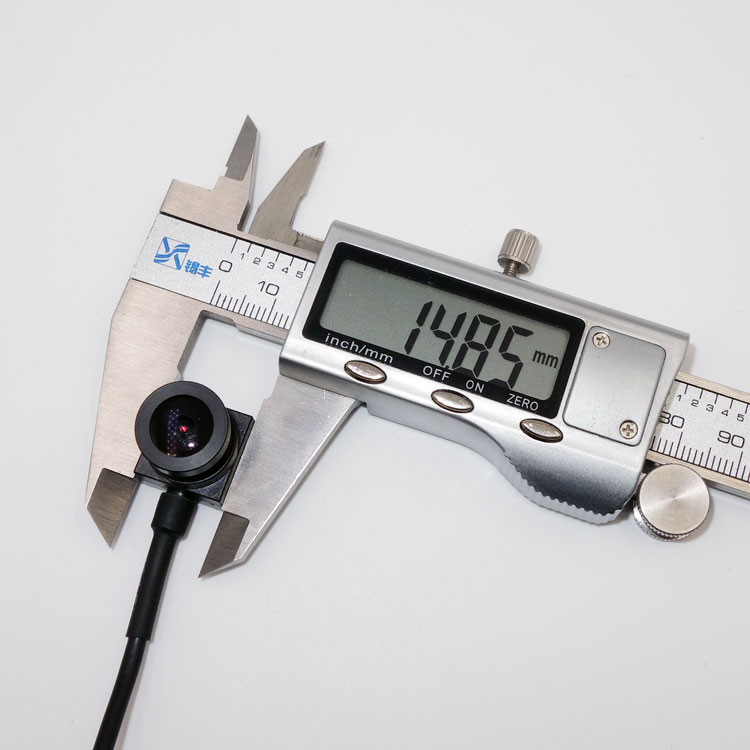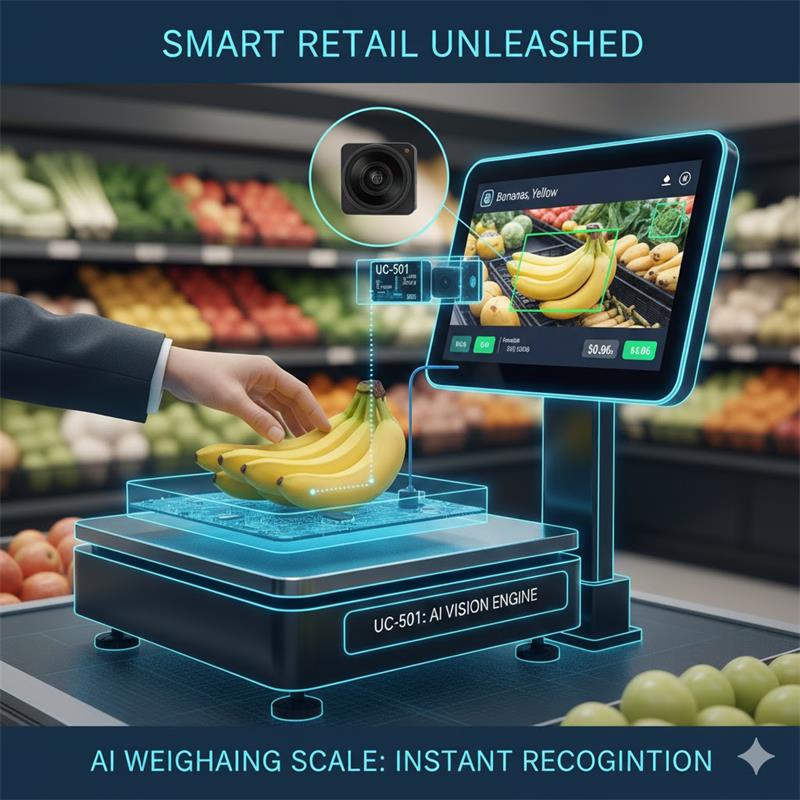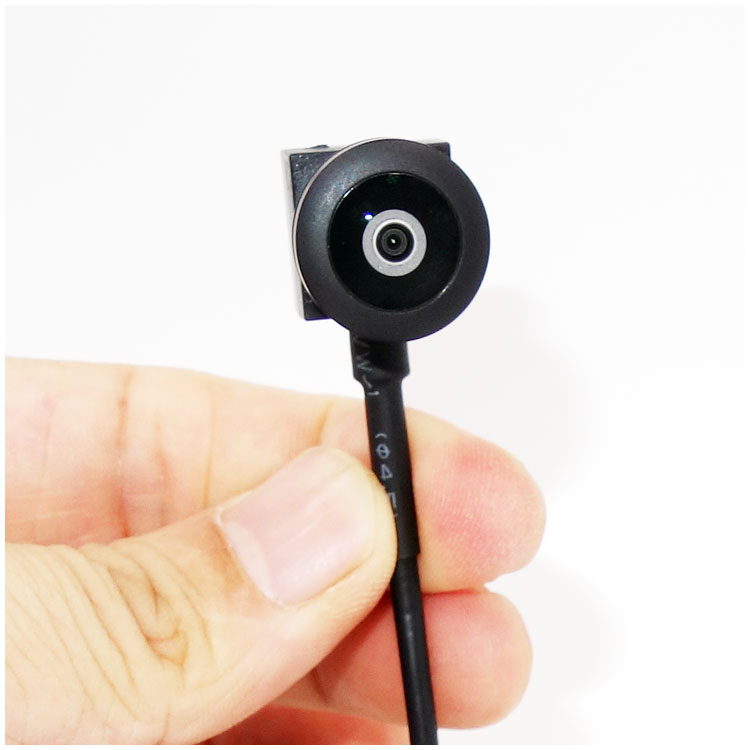
The retail landscape is undergoing a seismic shift. The traditional checkout experience, long a source of friction for customers, is being reimagined through automation and artificial intelligence. At the forefront of this revolution is the AI weighing scale, a device that promises to eliminate the tedious process of searching for PLU codes in the produce aisle. The core technology enabling this leap forward is Computer vision for retail, and the single most critical component is the camera—the intelligent eye of the entire system.
However, selecting the right camera is a major engineering hurdle. It’s a decision that impacts mechanical design, software development, AI performance, and ultimately, the project's timeline and budget. This article explores the core design challenges of creating AI-powered retail terminals and demonstrates why the UC-501 mini USB camera is the ideal vision engine to overcome them.
For any engineering team tasked with building a smart retail device, the path is fraught with technical trade-offs. These four challenges consistently emerge as the primary obstacles to success:
The UC-501 was designed to systematically solve these exact challenges, making it more than just a component, but a strategic solution.

Case Study 1: FreshMart, Germany - Eliminating Checkout Friction
Case Study 2: Heartland Grocers, USA - Tackling Loss Prevention

Case Study 3: Apexx Retail Systems, California - Innovating Unattended Stores

The transition to AI-powered retail is no longer a question of "if," but "how." Success depends on making smart, strategic choices at the component level that de-risk projects and accelerate innovation. The UC-501 is more than just a camera; it is a purpose-built vision engine designed to solve the specific, real-world challenges of creating the next generation of smart retail devices. By providing a reliable, flexible, and easy-to-integrate solution, it empowers engineering teams to stop fighting with hardware and start focusing on what truly matters: building intelligent, seamless customer experiences.
Ready to accelerate your AI retail project? Contact our engineering team to discuss your specific requirements or request a UC-501 sample for evaluation. our-e-mail is office@okgoobuy.com whatsapp +86 13510914939
A: Not at all. In fact, the opposite is true. Because the UC-501 is a fully UVC (USB Video Class) compliant device, it exposes a rich set of controls to the host system through standard operating system APIs, without needing any proprietary drivers.
On a Linux system (common for AI terminals), you can use standard tools like v4l2-ctl to precisely script and manage a wide range of parameters, including:
Manual Exposure Time
Gain
White Balance Temperature
Brightness, Contrast, and Saturation
Sharpness
This allows your software team to dynamically adjust the camera's settings in real-time to optimize the image quality for your AI model under different lighting conditions, giving you both the ease of integration and the granular control you need.
A: This is a critical question for embedded system design, and the answer is: the CPU load is flexible and depends on the video format you choose to stream. The UC-501 supports two main output formats, allowing you to make a trade-off based on your system's architecture:
MJPEG (Motion JPEG): This is a compressed format. It uses significantly less USB bandwidth, which is ideal for systems with USB 2.0 limitations or long cables. The trade-off is that the host CPU must decompress the video stream, which incurs a moderate CPU load.
YUY2: This is an uncompressed raw video format. It uses much more USB bandwidth but requires virtually zero CPU processing to decode. The raw frames can be fed directly into your AI inference pipeline.
Our recommendation for AI terminals: If your embedded board (e.g., NVIDIA Jetson, Rockchip RK series) has sufficient USB bandwidth, using the YUY2 format is the ideal choice. It offloads all video processing from the CPU, leaving it entirely free to focus on its primary task: running your neural network.
A: We understand that in product integration, details matter. The UC-501 is designed as a flexible platform, not just a fixed product. Our engineering team can work with you on a wide range of customizations, including:
Lenses: We can equip the module with a vast selection of M12 lenses to achieve the exact Field of View (FOV) your application requires, from narrow telephoto to wide-angle fisheye. We can also provide lenses with specific IR-cut filters (e.g., 650nm for normal color, 850nm for IR night vision) or no filter at all (for full-spectrum sensitivity).
Cables: We can customize the USB cable length from a few centimeters to several meters. We can also provide different connector types (Type-A, Type-C, Micro-USB, or a 5-pin header for direct board-to-board connection) and orientations (e.g., 90-degree angled connectors).
Housing: While the standard 15x15mm housing fits most needs, we can discuss minor modifications or work with you on a fully custom enclosure design for large volume projects.
Firmware: For significant OEM partnerships, we can even customize firmware settings, including the USB Vendor ID (VID) and Product ID (PID), to match your company's identity.
In short, think of our standard module as a starting point. We encourage you to contact our technical team with your specific requirements.
A: Yes, absolutely. This is a perfect example of the custom engineering work we specialize in. We understand that for highly integrated products, the standard 1-meter round cable is often not the right solution.
Our capabilities for custom cable assemblies include:
Custom Lengths: From just a few centimeters to over 10 meters, we can produce cables to your exact required length, minimizing excess cable within your product's enclosure.
Cable Types: Beyond standard round cables, we can provide Flexible Flat Cables (FFC) or Ribbon Cables, which are ideal for routing through tight spaces, hinges, or around other components.
Connector Options: We can terminate the cable with virtually any USB connector you need (Type-A, Type-C, Micro-B, Mini-B, or an un-terminated pin header) at any orientation (straight, 90-degree up/down/left/right).
Shielding & Durability: We can also provide enhanced EMI shielding for cables used in noisy electrical environments or select more durable cable jackets for applications with repeated motion.
Our process is to work directly with your mechanical and electrical engineers to define the perfect cable specification for your design. This level of customization is a core part of our value as an OEM partner.